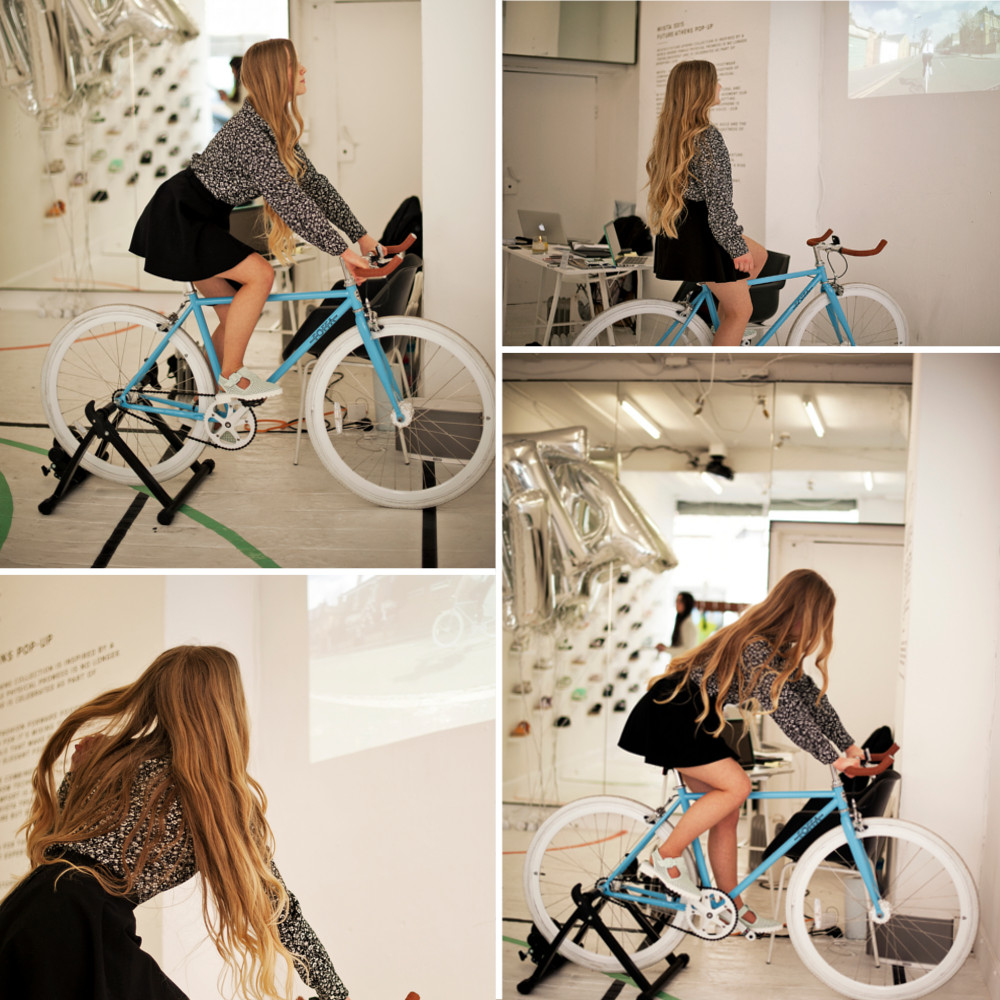Miista Pop-up Hackney Store Activation
Introduction
Wezside Tech Studio developed an innovative installation for the launch of Miista's pop-up shop in Hackney, London, called the Cadence Video Player. The concept, proposed by WeWillRaakYou agency, involved displaying footage recorded from a headcam while cycling through London. Inside the shop, a bicycle was set up to control the playback speed of the video projected on a wall.

The Process
Research by Wezside Tech Studio led to the discovery of several options for measuring cadence - the revolutions of a bike's crank. The idea was to use a sensor to generate data on revolutions per minute, which could then be translated into a video playback rate. The team sought an open sensor that allowed data interfacing. After exploring various options, they identified the need for a sensor compatible with the Bluetooth Low Energy (BLE) standard. The chosen Polar Bluetooth Smart Cadence sensor was cost-effective and either had an API or supported the standard BLE protocol. The first successful Bluetooth capture was demonstrated using a NodeJS server application.
The Implementation
Regarding video playback, Wezside Tech Studio explored creating a custom OpenFrameworks app but eventually decided to test HTML5 video. This decision was driven by the studio's existing server application, which made it easier to build a player endpoint for handling playback. HTML5 video's playback rate property was a crucial feature for the project. However, challenges arose with video encoding, requiring tweaks to improve seeking performance and leading to an increased file size. Despite the large size of about 15GB, the local server managed it efficiently, and the Chrome browser displayed it flawlessly.
The Logistics
The studio, based in Cape Town, packaged the entire setup, including an Intel NUC i3 mini PC, which was shipped to London. The client installed the setup in the shop following instructions provided in the server application.
The Result
The project was a huge success, with the video having a total running time of 1 hour and 15 minutes and being played through five times during the launch event. This installation marked Wezside Tech Studio's first foray into BLE technology and was a testament to their innovative approach and technical prowess.